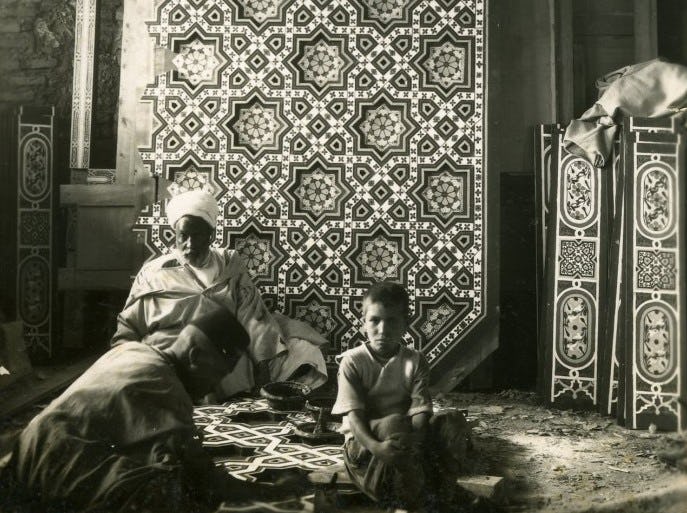Carved Wooden Screen (Jali)
Date1937
PeriodKingdom of Morocco
MediumWood, metal hardware
ClassificationsWoodwork
Object number64.44
DescriptionThis pierced wooden screen separates the foyer and central courtyard. Called a mashrabiyya in Arabic or jali in Persian, this architectural element appears throughout the Islamic world. Not only decorative, this type of screen filters light and cool air into the home while granting privacy to its inhabitants. The screen was custom-made for Shangri La by Moroccan artisans in the 1930s. Following a trip to Morocco in 1937, Doris Duke and her then husband James Cromwell commissioned the screen, along with other plaster and wooden architectural elements, from the architecture and design firm, S.A.L.A.M. René Martin of Rabat, Morocco. The design of the screen deviates from typical Moroccan mashrabiyya, which are composed of pieces of turned wood arranged in lattice patterns (see the balustrade in the Foyer). Instead, this screen was created from a thick piece of wood pierced throughout with geometric shapes, creating a similar lighting effect as the mashrabiyaa found throughout North Africa and the Middle East.
On View
On viewCollections
19th century
Dated 1271 AH (1854 - 1855 CE)
Dated 1271 AH (1854 - 1855 CE)
Dated 1271 AH (1854 - 1855 CE)
Dated 1271 AH (1854 - 1855 CE)
Dated 1271 AH (1854 - 1855 CE)
















